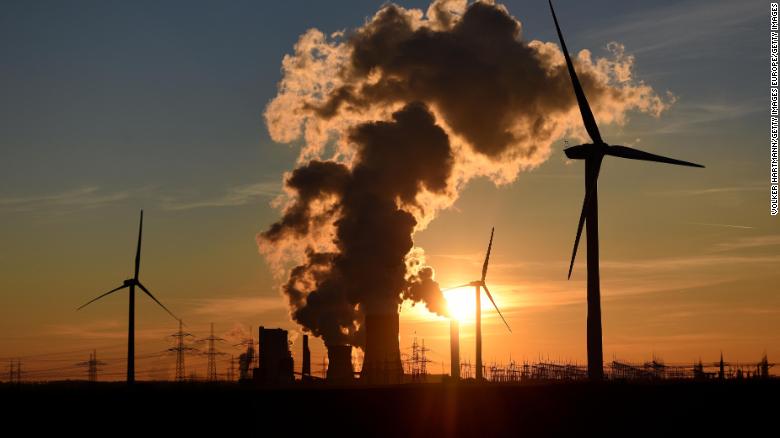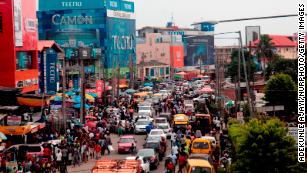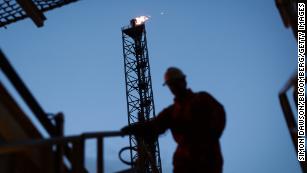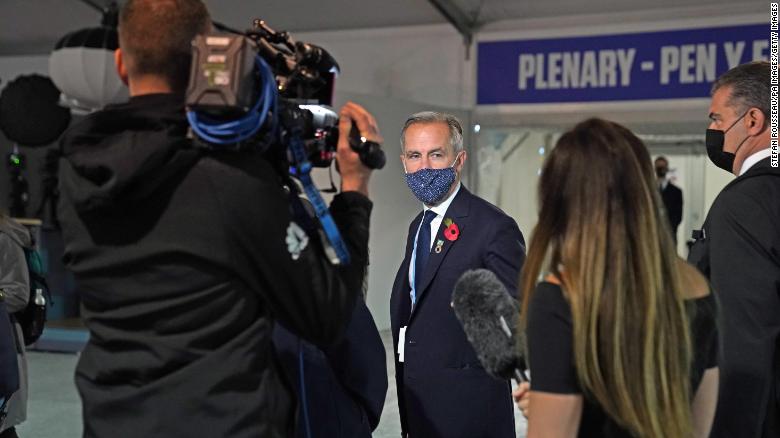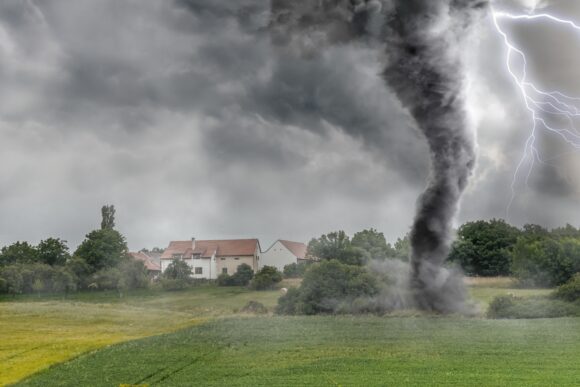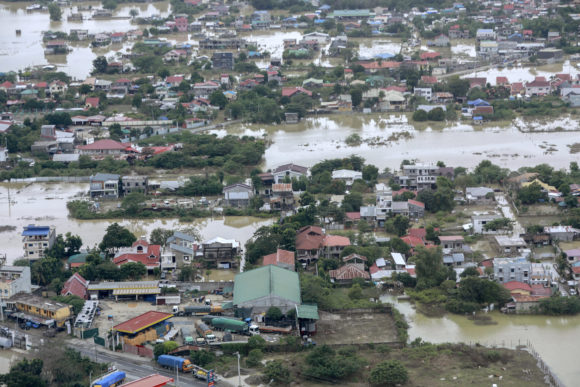Factions loyal to Turkey in northern Syria are using the waters of the Khabur River as a weapon of war to put pressure on the areas controlled by the Kurdish Autonomous Administration, according to a report by the Dutch peace-building organization Pax.
The report found that the so-called “Syrian National Army”, in which the pro-Ankara factions are affiliated, created dams on the Khabur River, which passes through several villages in northeastern Syria before continuing to the south and pouring into the Euphrates River in Deir ez-Zor Governorate (east).These factions, with the support of Turkish forces, control large border areas in northern Syria after military attacks targeting mainly the Kurdish People’s Protection Units, the backbone of the Syrian Democratic Forces, which Ankara considers a terrorist organization.
The PAX report, which relied on field work and satellite imagery, found that these species placing berms on a main river at a time when the region faced the driest summer is “an unequivocal example of the use of water as a weapon of war.”
The report showed that the three dams exacerbated the repercussions of the severe drought in the region.
“The effect of the intense heat has been amplified by limited amounts of rain, which means that farming communities have less water than ever before and when they need it most,” he added.Pictures published by Pax showed the three dams, and the first dam was built on May 22 this year.
The Khabur River stretches for 320 kilometers and is a tributary of the Euphrates. It originates in Turkey and passes through Al-Hasakah Governorate, which is the food basket of Syria.
According to the report, thousands of families were deprived of access to water due to the construction of dams, in a clear violation of international humanitarian law.
The report states, “This could be a deliberate measure used by the ‘Syrian National Army’ (factions) with the aim of starving the civilian population and/or causing its forced displacement as a method of warfare.”
In its recommendations, the organization urges the international community to urge Turkey to ensure that all civilians have access to the Khabur waters.
SOURCE: Middle East.in-24
Killing the Khabur: How Turkish-backed armed groups blocked northeast Syria’s water lifeline
The suffering of rural communities across northeast Syria controlled by the Kurdish-led Syrian Democratic Forces (SDF) is being amplified by Turkish-backed armed groups. Already struggling with severe climate change-linked drought, these areas have experienced even more severe water shortages since May, when the Syrian National Army (SNA) built three earth dams in areas under their control, cutting off the vital Khabur river 80 kilometers northwest of Hasakah city. New research by PAX, conducted through interviews on the ground and satellite imagery, has shown the depth and consequences of the dam construction on the lives and livelihoods of Syrian farmers.
The summer of 2021 was one of the hottest ever recorded in northeast Syria. The impact of the extreme heat was magnified by very limited rainfall, which meant agricultural communities had less water than ever at their time of greatest need. According to humanitarian agencies, over 12 million Syrians currently face dire consequences from lack of rain and water in the Euphrates River.
For farmers in and near the Khabur valley, the impact of these shortages was further compounded by the blockage of the river, the Euphrates’ largest tributary and a historically non-seasonal waterway. During fieldwork carried out along the M4 highway in September 2021, PAX interviewed farmers and pastoralists around Tel Tamer, many of whom were struggling with intense water scarcity. The cutting of the river’s flow came at a time of severe drought and high diesel prices, which are preventing many farmers from operating their pumps. With no irrigation, vast tracts of agricultural land are being left fallow.
This is the latest instance in which water has been used as a weapon of war during the conflict in Syria, adding a new unpredictable challenge to farmers’ lives. Since the incursion in parts of northeast Syria by Turkish forces and Turkish-backed armed groups, populations in the area face serious challenges around access to water. Starting in October 2019, the SNA disrupted the water flow from the Alouk Water Station to Tel Tamer and Hasakah on over 20 occasions, leaving close to a million people without access. The lack of rain in Spring 2021 also resulted in lower water levels, as Turkey limited the release of water from its dams into the Euphrates River at the border, with a recorded 70% decrease in water levels in Syria, that has severe consequences for communities depending on it.
Talking with Abu Gabriel, a 70 year old Assyrian farmer who has been living his whole life in the village of Tall Maghas on the Khabur River, he tells us that most of the people have left the village in recent years. Artillery shelling from the SNA against villages and positions along the M4 is ongoing, driving farmers away from their land. When asked about the water situation, the farmer then mentioned how in May, the SNA blocked the river by building dams. The increase in rainfall from previous years had boosted agricultural production, but soon crop fires, partly from the shelling, destroyed large parts of the harvest in 2019-2020. This put Abu Gabriel in a precarious position, spending most of his savings planting seeds last year. However, nothing grew as the expected rain never came. “There is no year that we don’t have fear because of the fires and the war. The land will be a desert”, he explained with desperation in his voice. Behind his farm, we walked to the dried out Khabur, a testament to the aforementioned story.
As of October 2021, the area north and west of Tel Tamer forms part of the frontline between the US-backed SDF, which control most of the northeast, and the Turkish-backed SNA, who have held a swathe of northern Syria since 2019. But the SNA continues to try to make in-roads into the northeast. Local civilians see the blocking of the river as part of a wider strategy to destabilize the Kurdish-dominated Autonomous Administration of North and East Syria (AANES).
PAX acquired high-resolution satellite imagery from Airbus and Planet, showing three dams being constructed along the Khabur river in SNA-controlled territory, and a third one in mid-October in an SDF-held area. The first dam was built on May 22nd, south of the village of Tall al Assafir. It was followed on May 27th by a dam 8 km north of the town of As Safih. A third was constructed only a few hundred meters north of the first dam at the town of Al Manajeer on June 1st.
From late May to early October 2021, the water flow was halted in the river. Downstream from the southernmost dam, 60 communities along the river bank and over 20 more nearby (up to 4 km) depend on its water. Ongoing monitoring showed that on October 6th, the dams were broken and water flowed southward, but it was stopped in the SDF-controlled area at the town Tal Kharita.
Dam(n)ing the Khabur River
With lower rainfall and less influx of water, all agricultural areas along the Khabur faced water shortages, be it in SNA- or SDF-controlled areas. This was likely a main driver to start blocking the rivers in SNA areas in order to retain water for irrigation. The building of the southernmost dam in late May 2021 at Tall Al Assafir resulted in roughly 80km of river being blocked and communities downstream lacking access to water from the Khabur. A dam constructed later at As Safir added another 20km of blockage with limited flow towards the southern dam, further adding up to 110km of blocked water flows. In total, 53.7% of the Khabur water flow between Turkey and Hasakah City was dammed.
From the southernmost dam at Tall Al Assafir to the Hasakah Lake, the river is estimated to be 95.3 km long. From Tall Al Assafir to Hasakah City along the Khabur River, it is 78.8 km. The estimated area of the Khabur River floodplain from Hasakah City up to the Turkish border is 143 km2. Forty-seven percent of this area was benefited by retaining water while the other 52.6% of the floodplain up to Hasakah City had less water availability. On average the floodplain is around 2 km wide. Floodplain irrigation happens within this area seasonally and depends on water pulses.
Based on Openstreetmap data, within the study area there are 138 populated areas corresponding to towns, villages and hamlets.Of these locations, 46 (33%) are located upstream from the southernmost dam – considered the ‘benefited’ area of the floodplain, while the other 84 locations (66%) are in the section of the river where there was less water availability due to the blackages upstream. Looking just at the populated areas within the floodplain, 31 (53%) lie where water was available, while 58 (65%) lie where water was not running and/or not present in the river bed. At the moment there is no clear population data in these villages. However, there is at least anecdotal evidence that some small villages were abandoned after the 2019 incursion and following ongoing shelling that posed direct risks to farmers. The majority of the villages further downstream are still populated by farmers and livestock keepers.
The most compelling evidence of the lack of water is the dry river bed. Using the NDWI index (Normalized Difference Water Index) also helps to identify soil moisture distribution in a scene. In the NDWI image below , higher moisture is detected around the blocked river, highlighting the river floodplain upstream from the dams. This is opposite to the natural behaviour described by Beven & Kirbi (1979), where higher moisture is downstream, accumulating at flatter and lower terrains. Though the vegetation growth in these areas seems to be normal in this area compared with previous years, this could be a starting point to further investigate the consequences of the water blockade.
A more detailed analysis could include a time series approach on NDVI or even soil moisture maps or measurements. This would show where vegetation changes in relation to moisture along the river and influence-area. It is important to clearly identify the extent of land that is actually irrigated or ‘benefited’ by the river water. That would define the influence area and the study area to monitor. Surveys with farmers on well levels or ground water monitoring stations could also give more detail on the relation of groundwater recharge in relation to river levels and interventions, such as blocking its flow and storing water temporarily. A yield survey in both the dry and wet floodplain for this year should also show the impact of water availability in the area. Further surveys could also study how productivity and water availability have differed in the past.
The Khabur, a source of fertility
With historic mentions by ancient Greek writers and the Bible, the Khabur river and its valley have been an important water source in the region. While starting in Turkey, the 320 kilometer long river gets its main source of water from the springs at the border town of Ras-al Ain and flows towards Al Hasakah, where it flows towards the Euphrates in Deir ez Zor. The Khabur and its main branches from the border with Turkey to the Hasakah lake is 206 kilometers. Traditionally, the floodplains along the river were used for cultivation of various crops through irrigation from the river. The resulting plentiful agriculture in the area made this region an important part of Syria’s breadbasket.
The type of agricultural practices have changed over the last fifty years due to newly built dams and irrigation projects. Low rainfall in Spring 2021 indicated that heavy drought was coming, as outlined by Immap in their May 2021 Crop Monitoring and Food Security Update. It included satellite analysis of vegetation growth in the north-east of Syria, as seen here:

The lack of rainfall linked with the climate crisis is also predicted by the Food and Agriculture Organisation’s recent publication on precipitation analysis in Syria to have severe consequences, putting the country on a trajectory to become a climate-security hotspot. Future droughts will increase in frequency and become more severe, creating more problems for agriculture and communities as water levels decline, both in rivers and groundwater sources.
A small break-through
In late September, satellite imagery showed an increase in bodies of water north of the dams at Tall al Asafir, indicating that more water was coming in from either the sources at Ras al Ain or more upstream in Turkey. In early October 2021, a rupture was seen at the dam and water started flowing again into SDF-controlled areas. At the time of writing, it is not known what caused this dam break. The river started filling again all the way south of Tel Tamer, but stopped at the town of Quraytah and has not progressed since. This still leaves 34 kilometers of the river and 23 communities towards Hasakah without direct access to the Khabur’s water, further compounding the humanitarian and livelihood problems of thousands of people in that area.
A violation of international humanitarian law?
The blockade of the Khabur River’s water flow by the Turkish-backed SNA during a period considered to be Syria’s most dry summer in history will have serious consequences for the population downstream.Taking into account both climatic conditions and further limitations of water coming in from the shutdown of Alouk water station, as well as limited flow into the Euphrates, the Khabur is an indispensable source for the survival of the civilian population. With over 84 towns and villages lacking access to water, there would likely be thousands of households struggling with water access caused by the deliberate building of dams stopping the flow of water essential for household and agricultural use. Thus, the blockade is an extreme measure that resulted in denying the civilian population of their sustenance. Under International Humanitarian Law, included in the Geneva Conventions Additional Protocol I (Protection of Victims of International Armed Conflicts), attacks on ‘objects indispensable to the survival of the civilian population’, (including water infrastructure), is prohibited. These concerns were further expanded in the Geneva List of Principles on the Protection of Water Infrastructure under Principle 12 and in Rule 10 of the ICRC’s Guidelines on Protection of the Environment in Armed Conflict. Both documents outline how ‘‘rendering useless’’ water infrastructure — in this case the blockade of water in a river — would fall under this category. Similarly, the 2004 Berlin Rules on Water Resources of the International Law Association under Article 51 provides that “in no event shall combatants attack, destroy, remove, or render useless waters and water installations indispensable for the health and survival of the civilian population if such actions may be expected to leave the civilian population with such inadequate water as to cause its death from lack of water or force its movement”. The scope of this provision covers the construction of water installations such as dams that block access to water indispensable for the survival of the civilian population.
In the case at hand, a non-state armed group, SNA, which controls an area, is cutting off essential water supplies to the civilian population. This could be a calculated measure employed by the SNA with the intention of starving the civilian population and/or bringing about their forced displacement as a method of warfare. These methods of warfare constitute violation of the rules of international humanitarian law. In this regard, customary International Humanitarian law prohibits: ‘‘the use of starvation of the civilian population as a method of warfare’’ (Rule 53) and ‘‘attacking, destroying, removing or rendering useless objects indispensable to the survival of the civilian population’’ (Rule 54).
It should be mentioned that Turkey has a military presence in Northern Syria and collaborates with the SNA. This would invoke Turkey’s obligation to ensure respect for international humanitarian law. Thus, Turkey must exert its influence, to the degree possible, to stop such violations by the SNA and any armed group with which it collaborates.
Moreover, this case also raises issues related to the violation of fundamental human rights such as the right to water, the right to food and the right to life. The blockade of the Khabur River has extensive negative impacts on the human rights of the civilian population of north-east Syria. These human rights complement the prohibition of rendering useless water indispensable to the survival of the civilian population under international humanitarian law. SNA arguably has such obligations under human rights law towards the civilian population in the areas it has established de facto control and has replaced the national authority.
Recommendations
Blocking a main river that a whole region depends on during the most dry summer ever recorded in the region will undoubtedly have severe humanitarian and socio-economic consequences. This type of action is a clear-cut example of using water as weapon of war, violating international humanitarian law and international human rights law, exacerbating already existing climate-linked impacts. Tens-of-thousands of people require access to water for personal use and to sustain their livelihoods as farmers or keeping livestock. Current forecasts on climate-linked environmental changes paint a bleak picture on future rainfall patterns that will likely see more frequent and severe droughts in the region. Water scarcity is already resulting in a drop in groundwater levels from (illegal) well-digging and this is expected to increase.
We call upon the responsible parties, including the Syrian National Army and the Turkish government to:
- Immediately remove all dams in the Khabur River halting the blockade of water downstream.
- Respect international legal obligations on protection of civilian infrastructure, as protected under the Geneva Conventions Additional Protocol I.
- Commit to peaceful dialogue over solutions relating to climate-linked degrading natural resources.
We call upon the the international community to:
- Proactively engage with Turkey to ensure civilians have access to the river’s water.
- Develop a strategy for the region on cross-boundary water challenges linked climate-change linked developments that affect surface and groundwater, soil and vegetation growth.
- Call upon the Human Rights Council and the Commission of Inquiry to include the blockages of rivers in their situation monitoring and systematically include violations of access to water in their reporting and raise this with relevant authorities.
- Call upon the UN Security Council should ensure it is briefed regularly on the water insecurity impacts facing civilians in Syria and other conflict-affected areas during its monthly briefings on the humanitarian situation, and ensure the participation of civil society organisations in the briefings and reporting mechanisms.
SOURCE: PAX



